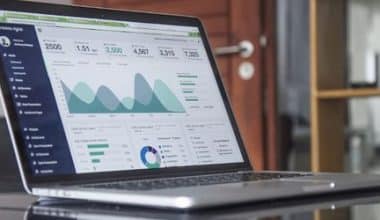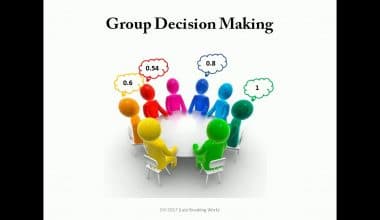What Is Cost Management?
Cost is an amount that has to be paid or spent to buy or obtain something. Managing cost or cost management means adjusting certain conditions that cause an increase or decrease in cost. In production, research, retail, and Accounting a cost is the value of money that has been used up to produce something or deliver a service and hence is not available for use anymore.
In business, the cost may be acquired, which means the cost of money spent on acquiring something. Additionally, in accounting, the cost is defined as the cash amount or cash equivalent given up for an asset.
All these definitions of cost have been given because no matter the variations, they are still similar and also apply to every part of a business. In business, the cost has become the most important factor, the information on cost can greatly affect the existence of the business. Cost is a major determinant in business activities and operations.
Before setting up a business, you must ascertain the start-up cost and the cost of running the business operations. Cost information is one of the most important pieces of information any business entity should pay very close attention to.
Overview
Having considered what cost is, managing cost is key in any business decision and it makes a substantial part of strategic planning and decision-making. Cost management focuses on cost reduction and continuous improvement and changes rather than cost containment. Cost management consists of those actions that are taken by managers to reduce cost, some of which are prioritized on the basis of information extracted from the accounting system.
It is important that you know all the approaches that can be used to reduce the cost even if these methods do not rely on the accounting information. You should also note that, although cost management seeks to reduce cost, it should not be at the expense of customer satisfaction. Ideally, the aim is to take action that will both reduce costs and enhance customer satisfaction.
Ways To Effective Cost Management
To properly manage cost, we have to first identify cost objects and cost centers. Also, cost estimation should be done with the utmost expertise so that the actual cost will be generated. Properly allotted to the cost centers and cost objects from which they were incurred.
The way cost is allocated, should be done with great skill, and traditional or arbitrary style should be avoided, rather Activity-Based Costing(ABC) should be used, so overheads can be properly allotted.
Here are some good practices for managing costs in order to increase profit.
1. IDENTIFY COST OBJECTS AND COST CENTRES
Cost objects are activities for which separate measurement of cost is desired e.g cost of products, cost of service, cost of operating a particular department or sales territory, while cost centers are described as locations where overhead costs are initially assigned, they consist of departments in an organization like sales, marketing, and the likes. Once these have been identified, you can objectively sort out ways of reducing such costs.
2. PROPER ALLOCATION OF COST
Since you have been able to identify the cost objects and centers, costs should be properly assigned to where there were incurred. If we say the sales department generated the most cost, such should be identified and properly assigned to the sales department rather than spreading it to other departments which did not contribute to the cost. Once the cost has been properly assigned and allotted. It can thereon be worked on and reduced in order to increase profitability.
3. MAINTAIN A PROPER COST MANAGEMENT DATABASE
A database of all the costs of the business should be maintained, with costs appropriately coded and classified. So that relevant cost information can be extracted to meet each requirement. A suitable coding system enables cost accumulated by the required cost objects(such as product or service, departments, distribution channels, etc) and also to be classified by appropriate categories.
Read More: Promotion Strategy: All you need to know
Typical cost classification within the database such as (direct material, direct labor, and overhead) and by cost behavior (fixed and variable). Maintaining a cost database is key because it could be used for future decision-making. In addition, the database should be reviewed and updated at periodic intervals and kept up to date.
4. COST REDUCTION TECHNIQUES SHOULD BE IDENTIFIED
There are certain workable techniques that can be applied to properly reduce cost. These techniques identify how the cost is incurred, it shows what could be reduced and how best to reduce it. In order to arrive at the least cost possible without compromising quality. Some of the techniques that can be used are;
A. LIFE CYCLE COSTING, estimates the cost of a product over its entire life cycle from introduction to exit from the market. In order to determine whether the profit earned during the manufacturing phase will cover the cost incurred during the pre and post-manufacturing stages.
B. TARGET COSTING; this includes determining the target price which customers will be willing to pay for the product, deducting a profit margin from the target price to determine the target cost, estimating the actual cost of the product and if actual cost exceeds the target cost, investigate ways of driving down the actual cost to the target cost.
Read More: Low cost Marketing strategy
C. TEAR-DOWN ANALYSIS; Involves examining a competitor’s product in order to identify opportunities for product improvement and /or cost reduction. The competitor’s product is dismantled to identify its functionality. Design and to provide insight into the processes that are used and the cost to make the product. The aim is to benchmark provisional product design with the design of competitors and to incorporate any observed relative advantages of the competitor’s approach to product design.
D. VALUE RE-ENGINEERING; This Is an examination of the factors affecting the cost of a product or service in order to devise means of achieving the specified purpose at the required standard of quality and reliability at the target cost. The essence of value re-engineering is to achieve the assigned target cost by, identifying improved product designs that reduce the product’s cost without sacrificing functionality and or eliminating unnecessary functions that increase the product’s cost and for which customers are not prepared to pay extra.
Read Also: Market Segmentation: All you need to know with examples
In conclusion, when managing costs we should have in mind that costs can never be eliminated totally. But if properly managed, certain cost could be avoided, also cost details should be given huge attention because, cost determines profit and prices, so cost should be given proper credence in the analysis. Expertise should be used so as to get the required benefits. Certain cost procedures might seem costly to operate but in the long run, they save a lot of money. Also, a very detailed database of costs should be maintained, updated, and reviewed so it can provide necessary information when needed for a particular purpose. Finally, cost should not be reduced to the point where quality is now compromised. Customers want the best quality at the cheapest price possible.
Which Is Most Crucial for Cost Management?
Some of the most crucial instruments are listed below: Budgeting: You require an exact budget for cost project management. This necessitates the use of a budgeting application to keep track of expenses utilizing personalized hourly rates and financial categories. timekeeping programs: This is especially helpful when attempting to calculate the cost of resources.
What Are the Five Roles That Cost Management Plays?
Cost management is a crucial corporate process because of factors including planning, communication, motivation, evaluation, and decision-making. The four main components of the cost management process are resource allocation, cost estimating, cost budgeting, and cost control.
What Are the Four Cost Measures?
It is helpful to divide total expenses into fixed costs, marginal costs, average total costs, and average variable costs because each statistic has unique business-related insights.
What Are the Costing Methods?
Job costing and Process costing are the two most popular costing techniques. For businesses that produce goods or carry out tasks in accordance with customer requirements, job costing is appropriate. Process costing works well in fields where production is continuous and output is constant.
How Does Cost Structure Work?
The totality of the many fixed and variable cost kinds that go into a business’ overall expenses is known as its cost structure. Cost structures are used by businesses to determine pricing and pinpoint areas where costs might be cut.
FAQs
Why is managing costs important?
It aids in the control of project-specific costs, as well as overall corporate costs. One can forecast future expenses and costs and work toward the predicted income as a result.
What is meant by cost management?
The practice of planning and controlling the costs associated with running a firm is known as cost management.
What are the objectives of cost management?
(1) to cost out products, services, and other cost objects; (2) to offer information for planning and control; and (3) to provide information for decision making are the three broad purposes of a cost management information system.






